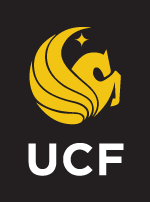 |
|
The Sky Dome Spectral Energy Project |
 |
|
We present spectal sky data, source code, and experimental results from the research project on sky dome spectral energy project that is currently being conducted by the SENSEable Design Lab at the University of Central Florida in Orlando, FL. This project started at the Program of Computer Graphics at Cornell University where the intial sky data was catpured. The results are presented in reverse chronological order, so that our SIGGRAPH ASIA 2014 paper that described the data capture process and intial tools is now on the bottom of the page. The dataset is provided in a single source that is continuously being expanded as new data is captured and cleaned for public use. We provide various open-source tools to allow researchers to view and use the data in their experiements. Please view our Github organization spectralskylight for all the code, data, and documentation we currently have aviable. Check this page from time to time to see whether there are any updates as we continue our research!
|
Source Code and Data Main Download:
|
|
| SPIE Proceedings Vol. 10751, Optics and Photonics for Information Processing XII, 107510F (2018) |
Learning and estimating whole sky visible, VNIR, SWIR radiance distributions from a commercial camera |
|
Joseph Del Rocco,
Charles Brandon Patterson,
Hassen Dhrif,
and Joseph T. Kider Jr.,
|
| School of Modeling, Simulation, and Training, University of Central Florida |
|
|
 A chart showing our estimate of sky radiance distribution curves between 350-2500nm from images captured with a digital camera. (Left) We use measurements from a commercial digital camera and a sky scanning spectroradiometer to train machine learning algorithms. (Right) We then utilize this ML model to take new sky images and produce the whole sky spectral illumination in real-time.
A chart showing our estimate of sky radiance distribution curves between 350-2500nm from images captured with a digital camera. (Left) We use measurements from a commercial digital camera and a sky scanning spectroradiometer to train machine learning algorithms. (Right) We then utilize this ML model to take new sky images and produce the whole sky spectral illumination in real-time.
Abstract
This work proposes estimating sky radiance distribution curves between 350-2500nm from images captured with a hemispherical digital camera. A novel hardware system simultaneously captured spectral, spatial, and temporal information to acquire accurate physical measurements of the solar/skydome radiance variation. To achieve this goal, we use a custom-built spectral radiance measurement scanner to measure the directional spectral radiance, a pyranometer to measure the irradiance of the entire hemisphere, and a commercial digital camera to capture high-dynamic range (HDR) hemispherical imagery of the sky. We use the measurements obtained from a commercially available digital camera and correlating spectroradiometer measurements to train machine learning (ML) models to estimate whole sky full-spectrum radiance distributions (VIS, VNIR, and SWIR) from a low dimensional RGB input. We train clear, cloudy, and mixed sky models, and cross-validate the estimated radiance distributions with ground-truth data. We highlight important measured and engineered ML features, and we present useful feature engineering techniques employed to minimize model estimation error. Additional contributions of this work include the code for all ML models and experiments, a dataset of all-sky HDR captures with correlating spectroradiometer measurements captured 453 times over 16 days, and an open-source, crossplatform, interactive viewer used to visualize photometric and radiometric data side by side.
|
Materials for Download
|
|
|
 A chart showing solar/skydome spectral radiances and comparisons with state-of-the-art simulation models. (a) Our custom built solar- skydome scanner, (b) relative differences between state-of-the-art simulation models and our measured samples over the hemisphere, (c) example of sample points and captured sky imagery, and (d) spectral radiance curves for different sample points in (c).
A chart showing solar/skydome spectral radiances and comparisons with state-of-the-art simulation models. (a) Our custom built solar- skydome scanner, (b) relative differences between state-of-the-art simulation models and our measured samples over the hemisphere, (c) example of sample points and captured sky imagery, and (d) spectral radiance curves for different sample points in (c).
Abstract
The illumination and appearance of the solar/skydome is critical for many applications in computer graphics, computer vision, and daylighting studies. Unfortunately, physically accurate measurements of this rapidly changing illumination source are difficult to achieve, but necessary for the development of accurate physically-based sky illumination models and comparison studies of existing simulation models.
To obtain baseline data of this time-dependent anisotropic light source, we design a novel acquisition setup to simultaneously measure the comprehensive illumination properties. Our hardware design simultaneously acquires its spectral, spatial, and temporal information of the skydome. To achieve this goal, we use a custom built spectral radiance measurement scanner to measure the directional spectral radiance, a pyranometer to measure the irradiance of the entire hemisphere, and a camera to capture high-dynamic range imagery of the sky. The combination of these computer-controlled measurement devices provides a fast way to acquire accurate physical measurements of the solar/skydome. We use the results of our measurements to evaluate many of the strengths and weaknesses of several sun-sky simulation models. We also provide a measurement dataset of sky illumination data for various clear sky conditions and an interactive visualization tool for model comparison analysis available online.
|
Materials for Download
|
|



